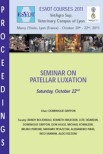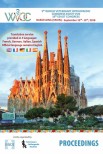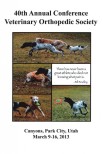OBJECTIVE:
To identify the optimum intra-articular multipotent stromal cell (MSC) tissue source in the canine stifle.
STUDY DESIGN:
Experimental.
SAMPLE POPULATION:
Infrapatellar adipose tissue, synovium lining the joint capsule, and synovium surrounding the cranial cruciate ligament (CrCL) from normal stifles of 6 dogs.
METHODS:
Nucleated cell density for each tissue was determined, and cell doublings (CD) and doubling times (DT) were quantified for expansion rates. Adipogenic, osteogenic, and chondrogenic differentiation was confirmed with light microscopy. Fibroblastic, adipogenic, and osteogenic colony forming unit frequencies were determined for multipotentiality. Tissue-specific target gene expression was assessed, and percentages of CD29(+) , CD34(+) , CD44(+) , CD45(+) , and CD90(+) cells quantified.
RESULTS:
Adipose tissue had the highest MSC density (ASC). The CD decreased with increasing passages for all cell types, and ASC values tended to be higher. Multipotentiality decreased with passage, but remained highest in ASC. Tissue-specific target gene expression was higher in induced versus noninduced cells, and ASCs had the highest upregulation across passages. Most cells were CD29(+) , CD44(+) , CD90(+) , and percentages decreased with passage. Within cell types, there were more CD29(+) ASC in early passages and more CD44(+) and CD90(+) ASC in later passages.
CONCLUSIONS:
ASC had the highest in vitro expansion rates, CFU frequencies, tissue-specific target gene expression, and percentages of MSC immunophenotypes.
Canine Intra-Articular Multipotent Stromal Cells (MSC) From Adipose Tissue Have the Highest In Vitro Expansion Rates, Multipotentiality, and MSC Immunophenotypes.
Date
2013 Feb
Journal
Vet Surg
Volume
42
Number
2
Pages
137-46









